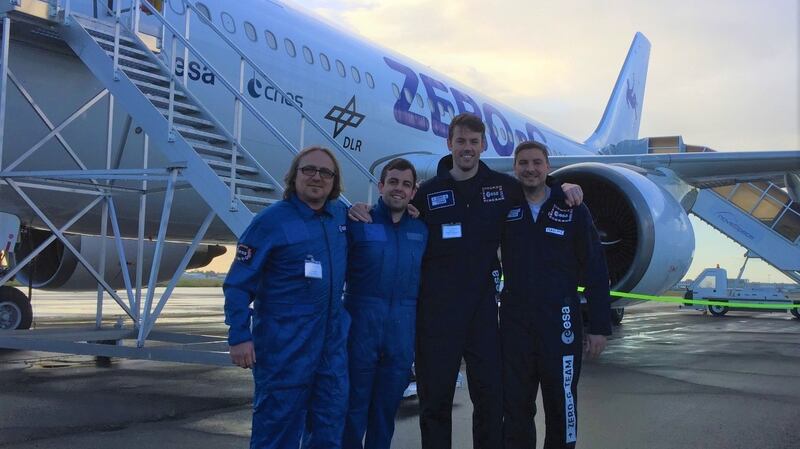You recently experienced weightlessness. How?
A few months ago, my team and a team from the University of Pisa took part in a series of European Space Agency-sponsored parabolic flights where you experience weightlessness in free-fall. The plane achieves this by flying in a parabola shape, like a camel’s hump. The plane is in level flight then it pulls up sharply and you experience double gravity so you get pushed down, but then the plane goes over the hump and downwards and you get 20-30 seconds of almost zero gravity or “microgravity”.
That means you float around unless you hang on to something. We experienced this almost 100 times over the course of three days. It is one of the oddest sensations I have ever had.
Okay, my stomach is lurching just thinking about it. Why did you do that?
These parabolic flights are one of the only ways we can generate sustained microgravity on Earth, and they offer the opportunity to carry out experiments. We can explore questions in fundamental science and also look at applications that could be useful for travelling or living in space.
We looked at heat transfer in water droplets. Heat transfer is an important underlying process for lots of applications, such as electronics equipment and power plants. There were other scientists aboard too. One group was looking at how to fry chips in microgravity – another example of heat transfer – to find out more about how we might cook in space.
What specific experiment did you work on?
We looked at how water droplets evaporate in microgravity. Evaporation of droplets, either by diffusion or through active heating, involves complex flows and transfers of energy that are not fully understood. We wanted to see experimentally what happens when you remove gravity, whether our theoretical assumptions about it are correct.
And what have you found?
We are still processing the data, but so far we can see that heat transfer tracks with gravity, so there is an effect. As humans, we live in a sphere of knowledge and we push outward, mostly incrementally. We are at one of these frontiers of knowledge with this work.

How did you come to Ireland?
I am from the far-north wilderness in Canada – no roads go north from where I am from. I did my PhD in Canada on microgravity, then myself and my now wife went backpacking from southern India to the Gobi desert. We ran out of money but didn’t want to go home. I found a lab in Trinity that did work like mine, so applied for a job and we have been in Ireland for about 14 years now.
What do you do when you are not researching?
I spend time with my wife and kids. Also, for me science really is one of those professions that is a hobby. If I have spare time by myself I will sit and work on writing papers or doing calculations.
What do you wish people appreciated more about scientific research?
That research and knowledge discovery can have many “octopus arms” that reach out of it. We try to understand heat transfer to better inform the design of more efficient equipment for use both in space and on Earth. But we also do development work to help rural communities in Africa, and we are working with companies big and small who see how our science can solve their problems.
So you have the long vision of getting people into space, and sometimes people only really see that whizz-bang stuff, but academic research has a lot more impact right next to you, you just don’t always see it.










